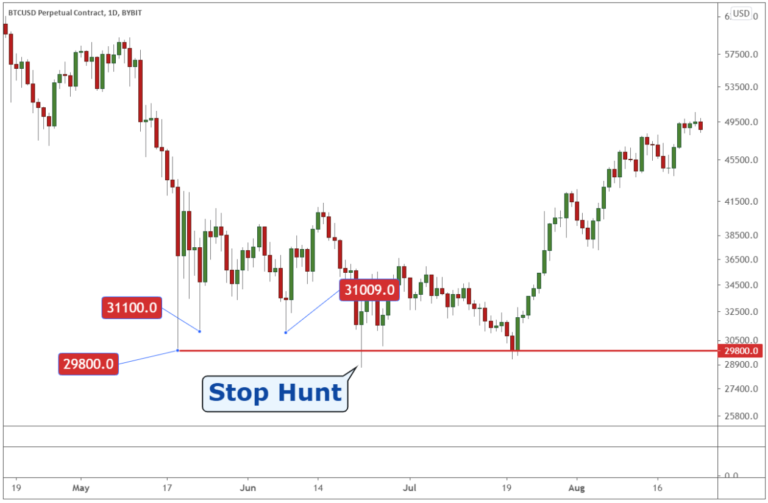Introduction
The entry of AI technologies into the world of trading was intended to bring about a modernization in investment practices and management of portfolios. Unfortunately, not all advancements prove fruitful as seen from the disastrous collapse of MTFE Trading’s supposed state-of-the-art artificial intelligence program that scammed $100 million. This article examines how this widely-acclaimed platform led to financial devastation which reverberated through investors and market players alike.
What Was the MTFE Trading AI App?
Promoted as an innovative tool, the MTFE Trading AI application provided automated trading facilities fueled by sophisticated algorithms and machine learning. Its attraction to yield substantial profits without requiring much exertion enticed several investors who sought to benefit from the trend of Artificial Intelligence-based trade.
The Unraveling of the Scheme
The MTFE Trading AI application was marketed as an innovative investment prospect but ultimately proved to be a carefully planned Ponzi scam. Prospective investors were enticed with promises of significant returns purportedly achieved through artificial intelligence trading strategies. However, the actuality differed from these assertions since profits did not originate from successful trades but instead relied on new investors funneling money into the scheme. This article delves deeper into this fraudulent enterprise by examining warning signs and indications that resulted in its downfall.
Unsustainable Returns
The MTFE Trading AI app raised major concerns with its pledge to deliver extraordinarily high and unvarying profits. Ponzi schemes have a reputation for proposing returns that are implausibly profitable, making it impossible to sustain genuine investment plans. The promise of inflated earnings by MTFE Trading lured investors but triggered doubts among individuals familiar with financial markets.
Lack of Transparency
Transparency is a fundamental aspect of any legitimate investment opportunity. However, the MTFE Trading AI app lacked transparency in multiple ways:
- Operation of AI: The functionality of AI: The application did not sufficiently explain the functioning of its AI system. As a consequence, investors were unaware about the techniques, algorithms and information origins utilized in their purported trading operations leading to obscurity in this regard;
- The AI’s assets, markets or strategies used for conducting specific trades were not disclosed to investors;
- Ownership and Team: The identities of the individuals or team responsible for the app were concealed, which posed a challenge to investors in carrying out proper investigation into those overseeing their investments.
Regulatory Warnings
In protecting the interests of investors and maintaining investment opportunities’ legality, financial regulatory entities perform a critical function. MTFE Trading has been subject to several cautionary alerts by these organizations due to their suspicious conduct and lack of appropriate permits.
- Lack of Licensing: MTFE Trading conducted its business without obtaining the mandatory licenses or regulatory endorsements. This noncompliance with legal obligations gave rise to grave doubts regarding the authenticity of their investment proposal;
- Suspicious Activities: Regulatory authorities have raised concerns about suspicious and potentially fraudulent activities detected in the app, casting further doubt on its legitimacy.
The Scheme Unravels
As time passed, the unsustainable nature of the promised returns became evident. As more investors joined the scheme, the need to pay returns to existing investors from the investments of new participants became overwhelming. When the scheme could no longer sustain this financial juggling act, it ultimately collapsed, leaving investors with substantial losses.
Investor Protection and Lessons Learned
The unraveling of the MTFE Trading AI Ponzi scheme underscores the importance of due diligence and cautious investing:
- Verify Licenses: Before investing, always ensure that the entity is properly licensed and regulated by the relevant authorities;
- Research Transparency: Seek investment opportunities that are transparent about their operations, strategies, and team members;
- Beware of Unrealistic Returns: Be skeptical of investment opportunities that promise abnormally high and consistent returns, as they are often indicative of Ponzi schemes.
The Collapse

The collapse of the MTFE Trading AI Ponzi scheme marked the culmination of a fraudulent endeavor that had ensnared countless investors. This section provides a detailed account of the scheme’s inevitable downfall, including the key events that transpired during its unraveling.
Fulfillment of Withdrawal Requests
One of the initial indicators of the scheme’s impending collapse was the sudden inability to fulfill withdrawal requests from investors. As a fundamental characteristic of Ponzi schemes, the operators struggled to meet the increasing demand for withdrawals. This was primarily because the returns paid to earlier investors were sourced from the funds of new participants, and as the scheme grew, it became increasingly challenging to maintain this unsustainable financial structure.
Operators’ Disappearance
Following the failure to meet withdrawal requests, the operators of the MTFE Trading AI app disappeared abruptly. This sudden disappearance left investors in a state of disarray and disbelief. The individuals or team behind the scheme, who had operated in the shadows, ceased all communication and vanished with the accumulated funds.
The Domino Effect
The collapse of the MTFE Trading AI Ponzi scheme can be likened to a domino effect, with each event leading to the next in rapid succession. Here is a breakdown of the sequence of events that unfolded:
- Unsustainable Returns: The scheme had been offering investors unrealistically high and consistent returns, which initially attracted a large number of participants;
- Increased Withdrawal Requests: As the scheme grew, more and more investors sought to withdraw their profits or initial investments, putting immense pressure on the operators to deliver;
- Inability to Pay Withdrawals: Due to the absence of actual profits generated by trading activities, the scheme’s operators found it impossible to meet the escalating withdrawal requests;
- Operators’ Disappearance: Faced with insurmountable financial obligations, the operators chose to disappear, leaving investors in shock and despair.
Repercussions for Investors
The collapse of the MTFE Trading AI Ponzi scheme had significant repercussions for the investors who had been lured into the fraudulent scheme:
- Financial Losses: Many investors suffered substantial financial losses, as the promised returns turned out to be illusory;
- Legal Implications: Authorities initiated investigations into the scheme, and legal action was taken against the operators for their fraudulent activities;
- Investor Awareness: The collapse served as a sobering reminder of the risks associated with high-yield, low-transparency investment opportunities, leading to increased investor awareness about due diligence and regulatory compliance.
Lessons Learned
The collapse of the MTFE Trading AI Ponzi scheme provides several valuable lessons for investors and regulators alike:
- Vigilance: Investors must exercise vigilance when presented with investment opportunities that promise unrealistic returns;
- Due Diligence: Thorough due diligence, including verifying licenses and scrutinizing the transparency of operations, is essential before investing;
- Regulatory Oversight: Regulators play a crucial role in protecting investors by issuing warnings and taking legal action against fraudulent schemes.
The Aftermath and Legal Actions
Regulatory Responses
Regulatory bodies around the world were quick to respond to the collapse of the MTFE Trading AI app. Their primary goals were to ensure investor protection, maintain market integrity, and prevent similar incidents in the future. Here are some key regulatory responses:
- Immediate Suspension: Many regulators, including the SEC (U.S. Securities and Exchange Commission) and FCA (Financial Conduct Authority) in the UK, immediately suspended the operations of the MTFE Trading AI app to prevent further harm to investors;
- Investigations: Regulatory agencies initiated thorough investigations into the app’s operations, scrutinizing its business model, trading algorithms, and compliance with financial regulations;
- Asset Freeze: In some cases, regulators froze the assets of the app’s operators to preserve funds that could potentially be used to compensate victims.
Legal Actions
Legal actions were taken against the individuals and entities responsible for the MTFE Trading AI app’s collapse. The focus was on recovering assets and providing restitution to the victims. Here’s a detailed look at the legal actions:
- Civil Lawsuits: Numerous civil lawsuits were filed by investors who suffered losses due to the collapse. These lawsuits sought compensation for financial damages and losses;
- Class-Action Lawsuits: In some jurisdictions, class-action lawsuits were initiated, allowing multiple investors to join together in a single legal action, increasing their collective strength and resources to pursue claims;
- Criminal Investigations: In addition to civil actions, law enforcement agencies launched criminal investigations against the app’s operators for potential fraudulent activities, including securities fraud and money laundering;
- Asset Recovery: Authorities worldwide worked to identify and recover assets belonging to the operators and their affiliated entities. This included freezing bank accounts, seizing real estate, and confiscating luxury assets;
- International Cooperation: Due to the global nature of the case, international cooperation was crucial. Law enforcement agencies collaborated to share information, evidence, and coordinate efforts to bring the perpetrators to justice.
Compensating the Victims
Efforts were made to compensate the victims of the MTFE Trading AI app collapse. These efforts varied by jurisdiction and depended on the success of asset recovery and legal actions. Some common methods included:
- Distribution of Recovered Assets: Victims were compensated using funds recovered from the frozen assets of the app’s operators;
- Insurance Claims: In cases where the app had insurance coverage, victims filed claims to recover their losses;
- Government Assistance: In certain instances, governments established compensation funds to provide relief to victims who could not recover their losses through other means.
Analyzing the Impact

The collapse of the MTFE Trading AI app had far-reaching consequences, affecting investors, the broader trading market, and regulatory approaches. This section will delve into the detailed impact of the collapse in these three key areas.
On Investors
The fallout from the MTFE Trading AI app collapse had a profound and distressing impact on investors. Here are some key points to consider:
- Financial Losses: Many investors, including retail and institutional, suffered substantial financial losses. Some had invested their life savings, while others faced severe setbacks in their investment portfolios;
- Psychological Impact: Beyond the financial aspect, investors experienced significant psychological distress. They felt betrayed and helpless, having put their trust in a system that ultimately failed them;
- Legal Battles: Investors initiated a flurry of lawsuits against the app’s operators in their quest for compensation. Legal battles ensued, adding to the stress and uncertainty faced by those affected;
- Long-Term Implications: The collapse had long-term repercussions for investors’ financial planning and retirement prospects. Some faced the challenge of rebuilding their investment portfolios, while others contemplated early retirements due to losses.
On the Market
The collapse of the MTFE Trading AI app had broader implications for the trading market, causing ripples throughout the financial ecosystem:
- Investor Confidence: Investor confidence was severely shaken. The incident raised doubts about the credibility and reliability of AI trading platforms, making investors more cautious and skeptical;
- Market Volatility: The abrupt collapse of the app triggered short-term market volatility, as investors rushed to adjust their positions and assess potential exposure to similar risks in their portfolios;
- Scrutiny of AI Trading: The incident prompted greater scrutiny of AI-powered trading platforms. Investors and market participants began demanding transparency and accountability, pushing providers to be more transparent about their algorithms and risk management practices;
- Regulatory Focus: Regulators intensified their focus on AI trading apps, recognizing the need for stricter oversight to prevent future scams and protect the integrity of the financial markets.
On Regulatory Approaches
The MTFE Trading AI app collapse catalyzed significant changes in regulatory approaches to AI trading platforms:
- Stricter Regulations: Regulatory bodies worldwide initiated efforts to draft and implement stricter regulations governing AI trading apps. These regulations aimed to ensure transparency, risk management, and investor protection;
- Enhanced Oversight: Regulators increased their oversight of AI trading platforms, conducting comprehensive reviews of their operations, risk management procedures, and compliance with financial laws;
- Collaboration: International cooperation among regulators became more pronounced, as they recognized the global nature of AI trading platforms. Sharing best practices and information became crucial in preventing similar incidents;
- Educational Initiatives: Regulators also focused on educating investors about the risks associated with AI trading and the importance of due diligence. Educational campaigns were launched to raise awareness about potential pitfalls.
Learning from the MTFE Trading Debacle
The MTFE Trading AI app saga is a cautionary tale of what can go wrong in the rapidly evolving world of technology and investments. Here are key takeaways for investors and the industry:
Due Diligence is Crucial
One of the paramount lessons from the MTFE Trading Debacle is the absolute necessity of thorough due diligence. Investors must dedicate ample time and resources to research and understand the investments they are considering, especially when these investments involve cutting-edge technologies. To facilitate this, investors can employ the following strategies:
| Due Diligence Strategies | Description |
|---|---|
| Comprehensive Research | Investigate the technology, team, and track record of the investment. |
| Consultation with Experts | Seek advice from financial advisors or experts in the relevant field. |
| Review of Regulatory Compliance | Ensure the investment complies with regulatory standards and laws. |
| Scrutinize Past Performance | Analyze the historical performance and stability of the investment. |
| Risk Assessment and Mitigation | Identify potential risks and develop strategies to mitigate them. |
If It’s Too Good to Be True…
Investors should exercise caution when confronted with investment opportunities that promise consistent, high returns with little or no risk. Such propositions often raise red flags, as they defy the fundamental principles of investing. To avoid falling into the trap of unrealistic promises, investors should:
- Conduct a thorough risk assessment and weigh the potential rewards against the associated risks;
- Maintain a healthy level of skepticism and critically evaluate any investment that appears too good to be true;
- Diversify their investment portfolio to spread risk and reduce susceptibility to fraudulent schemes;
- Stay informed about market trends and fluctuations to make informed decisions rather than relying solely on promises of high returns.
Regulatory Compliance Matters
The MTFE Trading Debacle emphasizes the importance of adhering to regulatory standards and choosing investments and platforms that prioritize transparency and compliance. Investors should take the following measures to ensure they are investing in a regulated and secure environment:
| Regulatory Compliance Checklist | Action Steps |
|---|---|
| Verify Regulatory Authority | Confirm that the investment platform is regulated by a recognized authority. |
| Request Documentation | Obtain and review all necessary documents related to the investment’s compliance. |
| Monitor Updates and Changes | Stay informed about any regulatory changes affecting the investment. |
| Report Suspicious Activities | Report any irregularities or fraudulent activities to the appropriate authorities. |
Conclusion
The MTFE Trading AI app’s $100M Ponzi scheme serves as a stark reminder of the perils lurking in the promising but often murky world of AI trading. This incident is not isolated in the emerging field of automated trading technologies, such as those utilized in platforms like TradingView. These technologies, while innovative and capable of revolutionizing investment strategies, also open the door to new types of financial fraud and manipulation. Therefore, it underscores the need for vigilance, due diligence, and a robust regulatory framework to safeguard the interests of investors and maintain the integrity of the financial market. As technology like TradingView’s automated trading continues to advance, staying informed and cautious will be key to navigating the evolving landscape of investment opportunities, ensuring that the promising future of AI in finance is not overshadowed by risks.
FAQs
The MTFE Trading AI app claimed to use advanced algorithms to make profitable trades automatically. However, it turned out to be a Ponzi scheme, using new investors’ money to pay old ones.
Recovery depends on the outcome of legal actions and the ability to trace and recoup assets. Victims should follow the legal proceedings closely and report their cases to the authorities.
Always conduct thorough research, understand the risks involved, and be skeptical of promises of high returns with little to no risk. Also, ensure that any platform you use is regulated and transparent.
Investigations and legal proceedings are ongoing, with efforts focused on bringing those responsible to account and recovering lost funds.
The trading community has been vocal in its criticism of the lack of oversight and regulation that allowed such schemes to proliferate. There is a growing demand for stricter controls and transparency in AI trading.











